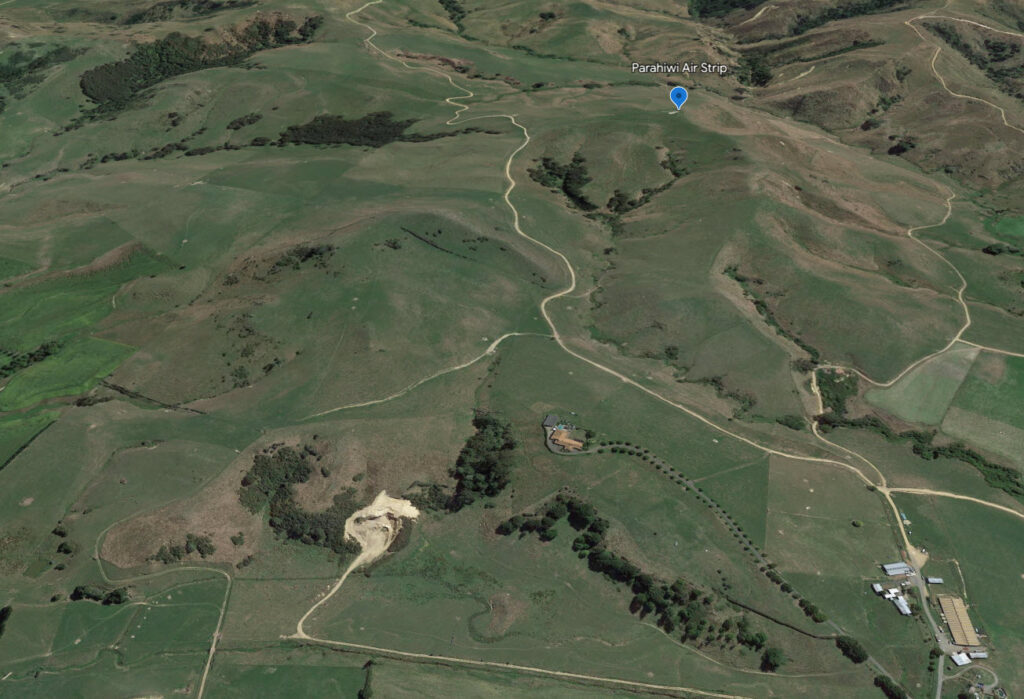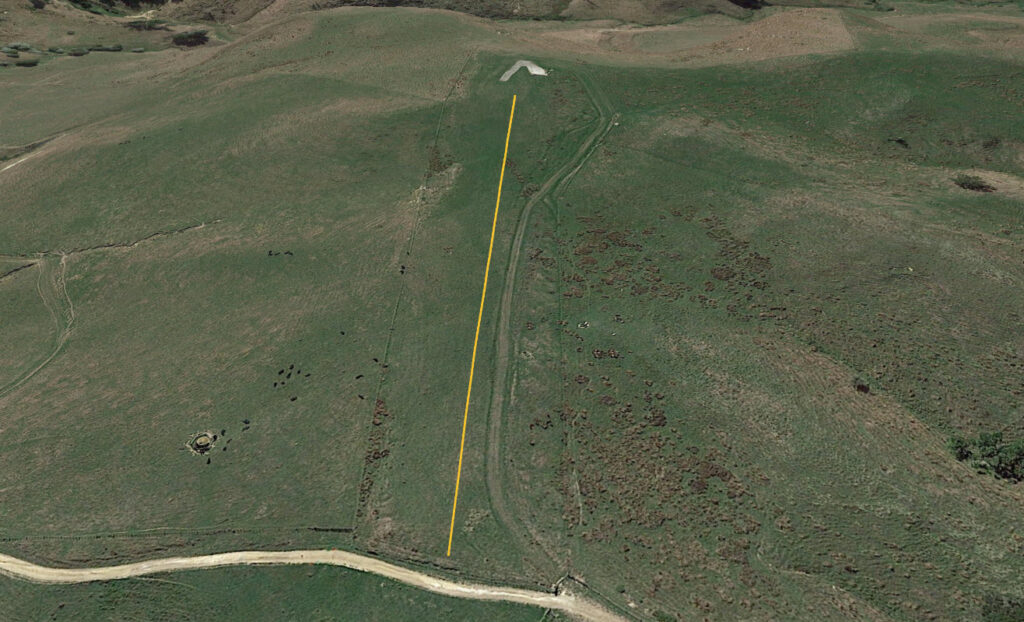Parahiwi is a farm of 1100 acres of rolling hills in the Waikato, that began life as a sheep and beef farm / Aberdeen Angus stud.
Originally part of a larger 1850 acre block bought (around 1935) and partially cleared by HD Williams (see Memoires p30 Memoires p31 ) and later in partnership with his son Clive Williams, who eventually took over in 1957 and farmed it with his wife Elizabeth and family.
An 800 acre portion of steep scrub covered hills to the East was sold to the neighbour (Jordan) already sheep farming on the Eastern side.
The remaining scrub / bush on the property is in gullies or on hillsides that require the vegetation to prevent landslips and erosion.
In later years, a small slip prone hillside at the rear of the property was purchased from the neighbours.
Clive Williams spent a large portion of his early years clearing the land. His father had initially been able to have cleared around 100 acres per year, but during the second world war years labour was hard to get, so a portion of what had been cleared reverted to scrub. By the time Clive took over the farm (1957), approx 70% of the land had been cleared to make usable farmland.
Even with substantial scrub and bushlands remaining, sheep and cattle were able to graze the land, with cattle often clearing the lower branches and foliage of the scrub, allowing access and shelter for sheep below.
The gullies that remained filled with scrub/ bush also often contained creeks or riverlets that provided water for the stock all over the farm, removing any need to pump water around the farm or install water troughs. Several ponds around the farm collected and distributed water downstream.

Click the image to open Google Earth live.
Approx 560 Tauhei Rd, Tauhei on Google maps

click for larger view
Front of farm from Tauhei Rd (Google Maps).
The farm was mainly used for sheep on the hills, with some cattle on the front lower flat portions.
HD Williams built a workers cottage on the property and later a sheep shearing shed and yards, and an implements shed from timber from buildings from a workers camp in the area of the homestead, where they were digging drains to drain the swamp (see memoires page 31). Some timber was also milled from the trees that bordered the Eastern boundary to the portion that was sold off (to Jordan).
Later (around 1952-53), Clive and Elizabeth built a house, on a high point above the sheds, in which to raise their family.
There were timber cattle yards built at the front of the property, beside the Tauhei road, and later (early 70’s) Clive renewed these with galvanised pipe.
Prior to aerial top dressing, fertiliser / Lime was spread by hand, with 200 lb / 100 kg bags being distributed along a line in the paddock, from a horse drawn sled. The workers would carry a front pack from where they would distribute handfuls of lime. when the pack was empty they would refill from the nearest bag.
At some point in the 60’s an air strip was built on a high point on the farm (approx 140 m above sea level, whereas the flat areas of the farm at the front are at about 30 m a.s.l.) to allow for aerial top dressing on the property and for surrounding properties.
The strip has a lower gently sloped area (with a bit of a hump about 1/4 way in) that rapidly rises to a moderately steep hill, on top of which the fertiliser was / is held in a bunker.
Total length of the strip would be about 250 m (750 ft) which would be extremely short runway if it was flat.
At some point a concrete area was laid for the loader vehicle to drive on and as the floor and sides of the bunker.
The bunker had / has a large sliding / rolling cover on rails to keep the weather off fertiliser waiting to be spread. These were torn off at various times in their life, in high storm winds. (current picture seems to show no cover left)
The airplane is loaded at the top of the hill, rolls rapidly down the hill and is usually just leaving the ground as it hits / bounces off the bump lower down. (See FU-24, with a stall speed of 92km/hr the plane with 1000kg of fertiliser on board needs to exceed 100km/hr in the 250m available runway, that’s approx 10-15 sec from 0 to 100km/hr before the runway runs out !)

During the second world war years, HD Williams trained the Home Guard on the property, teaching them how to throw grenades and fire rifles.
A rifle range was built by digging trenches, as was the grenade range.
Tauhei History (50 page PDF).
see page 25 for Home Guard training on Parahiwi.
page 27 that states HD built the first air strip in Tauhei in 1951 and later in the 1960’s built the air strip on a high point on the Parahiwi farm .
See also page 46 for HD Williams history.